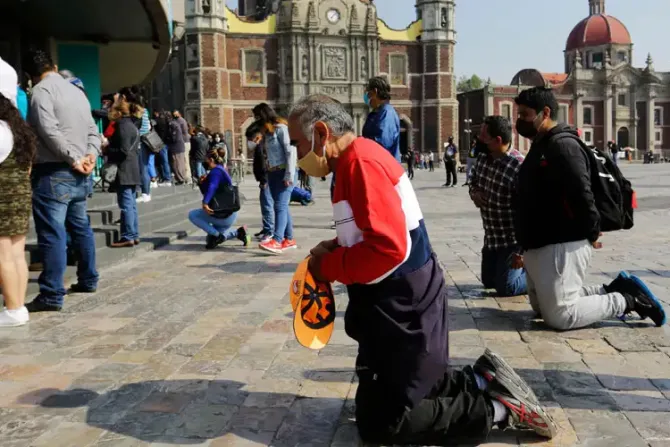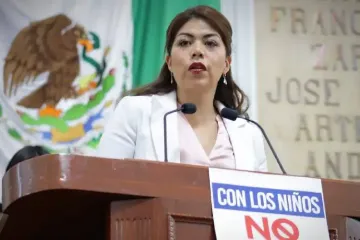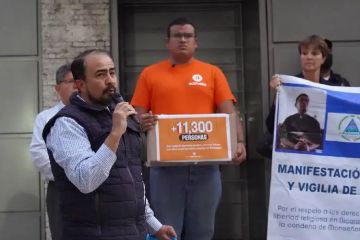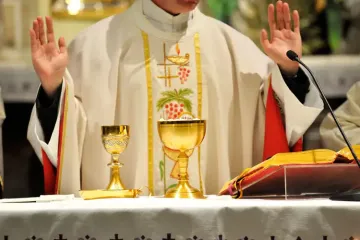ACI Prensa Staff, Mar 2, 2023 / 11:34 am
One of the challenges facing the bishops of the Catholic Church in Mexico is the decrease in the number of faithful in the country where Our Lady of Guadalupe, Empress of America, appeared.
According to data from the 2020 Population and Housing Census cited by the Mexican bishops, Catholics in the country constitute 77.7% of the population, or about 98 million people.
In 1950, Catholics constituted 98.2% of the population; by 1980 the number dropped to 92.6%. In 1990 it continued to decrease down to 89.7%, and in the year 2000 Catholics made up 87.9% of the population.
In 2010, the percentage fell to 82.7% and in 2020 it was down to 77.7%.
Based on the figures for 1950, as of the last census in 2020, the number of Catholics in Mexico has decreased by 20.5%.
To serve these faithful, the Church in Mexico has 19 ecclesiastical provinces consisting of 19 archdioceses and 79 dioceses.
The number of Protestants on the other hand has increased in Mexico over the same time period. In 1950 they made up 1.3% of the population; in 1960 they amounted to 1.7%; in 1970 to 1.8%; in 1980 to 3.2%; in 2000 they reached 7.3%; and in 2020 they were already 11.2% of the Mexican population.
On Feb. 2, the Mexican bishops published the “‘Synodal Synthesis’ for a Synodal Church: Communion, Participation, and Mission,” for consideration in the 16th Ordinary General Assembly of the Synod of Bishops, commonly referred to as the Synod on Synodality, which will have the same theme.
That synod will take place in October 2023 and 2024 in Rome and has a diocesan, continental, and universal stage. The first stage has been completed, the second is underway, and the third will take place at the Vatican.
In their Feb. 2 synthesis, the bishops acknowledge that “men and women religious as well as the lay movements had little participation” in the diocesan phase in which the majority attending were women (at 55%) and the age range was between 35 and 65 years, whereas the national average is 29.
“The laity who mostly participate in the pastoral tasks of the Church are adults (we recognize that there are very few young people), and the consultation rested mostly on them, but the dioceses that implemented electronic means and the use of social media for the consultation obtained a greater participation of young people,” explained Bishop Ramón Castro Castro, the secretary general of the Mexican Bishops’ Conference, to ACI Prensa, CNA’s Spanish-language news partner.
“The strategies to attract young people to the Church are being permanently implemented on an ongoing basis: There are leaders, teams; there are programs and great participation by parishioners contributing to this objective,” continued Castro, the bishop of Cuernavaca.
However, the prelate pointed out, “the dynamics of young people’s lives today face great challenges (family, school, economic, emotional, etc.) [and they] cannot always respond as we would like.”
“Definitely, yes it’s a difficult goal to achieve to draw young people to the Church. But we are neither panicking nor anguishing over it because we are working on it and some of the efforts that are being made are bearing fruit,” the Mexican bishop said.
On how to approach Catholics who have distanced themselves from the Church, Castro explained to ACI Prensa that it’s necessary to take into account that many of them “were laymen with criticisms who were not listened to at the time and, tired of being met with deaf ears, they left.”
“These brothers are mistakenly perceived as attacking the Church or even as enemies, without considering that their intentions were and continue to be good, and that their contributions can be very valuable to refresh the mind, vision, and methods of pastoral care today,” he said.
(Story continues below)
In April 2021, in his message to the 110th Plenary Assembly of the Mexican Bishops’ Conference, the then apostolic nuncio in Mexico, Archbishop Franco Coppola, noted that “the decrease in the Catholic population in this Guadalupan land is extremely worrisome.”
“We are now seeing more clearly how much — in recent decades — faith formation had not succeeded and has not succeeded, as perhaps we thought or as we would have wanted, to deeply penetrate the baptized,” he lamented.
“The effects of this notable decrease are not yet seen in the number of members of our presbyteries, because — thank God — our life expectancy has increased a lot in these years. But the median age of our [priests] goes up and up,” he said.
Coppola also pointed out that “all these data are a wake-up call for all of us.”
“When we are before him, the Lord of the harvest will ask us for an account of the talents, many, that he has entrusted to us: a Catholic people, faithful and devoted to holy Mary Guadalupe,” the apostolic nuncio to Mexico stressed.
This story was first published by ACI Prensa, CNA’s Spanish-language news partner. It has been translated and adapted by CNA.






